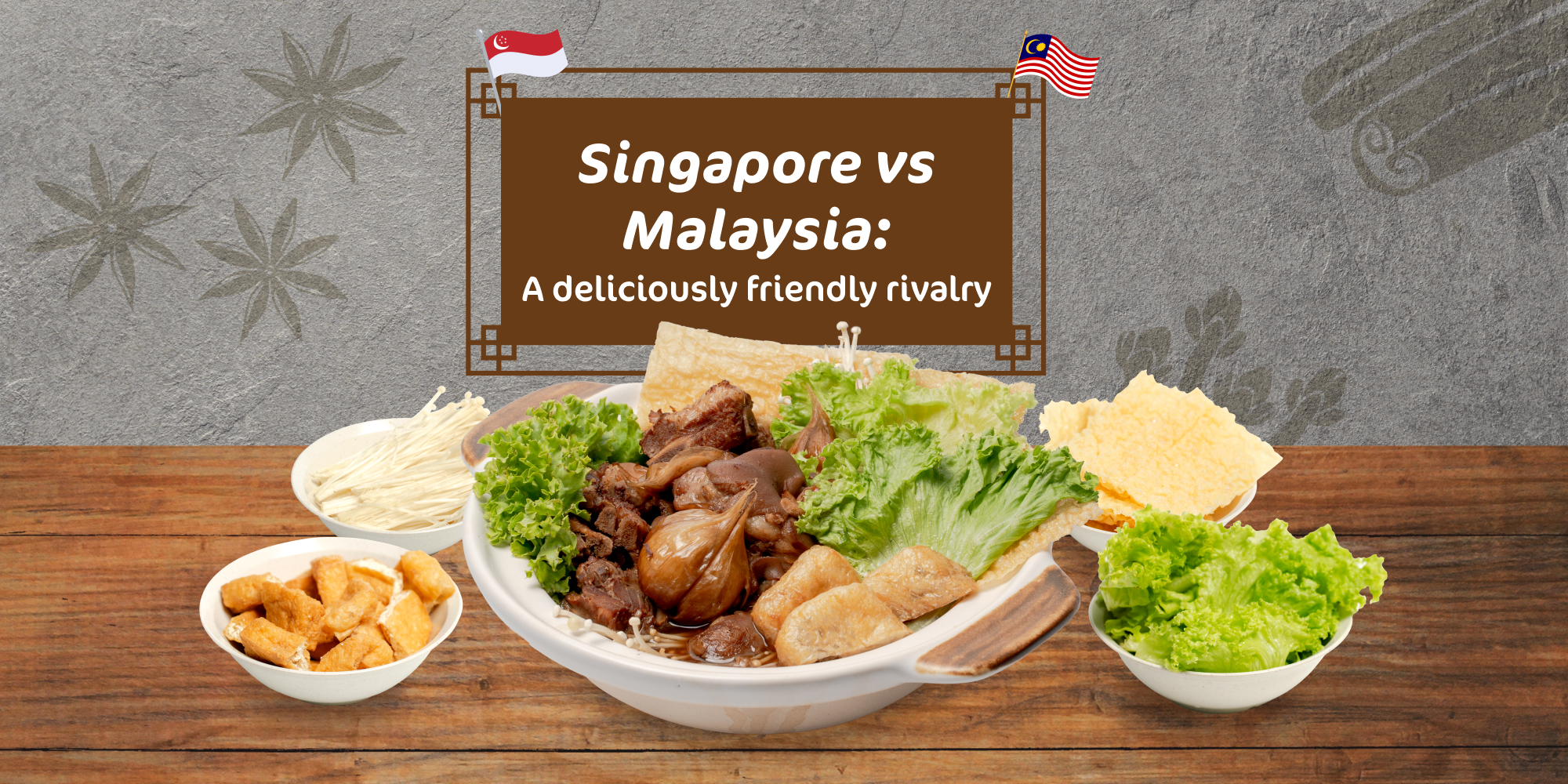We share the same Causeway, speak the same languages, and even enjoy the same Cantonese dramas and music… Yes, we’re talking about the commonalities found between Singapore and Malaysia.
But, there’s always one thing that makes us playfully sniff our noses at each other – our respective takes on food. You see, with just a body of water separating us, we managed to come up with iterations of our favourite dishes that can look strikingly similar, but taste vastly different. And once the conversation about food starts up, cue the never-ending debate about whose chilli crab tastes better, who originated the chicken rice, and so on.
So what are some of these dishes that’s gotten our tongues wagging? Read on to find out.
Laksa
Let’s start with Singapore. There are several variations here, but perhaps the most popular one is the Katong laksa. Its soup is made with coconut milk and dried shrimp, and is poured over noodles cut into tiny little pieces – which is why you see customers digging into it with a spoon instead of chopsticks. And believe me, even within our tiny island, there are still debates over which store sells the ‘real’ Katong laksa.
Hop over to Malaysia and you’ll find a whirlwind of variations – hailing from states like Sarawak, Johore and of course, Penang. The much-talked about Penang assam laksa goes the sour route instead of the Katong’s laksa sweet flavour profile, with soup that comprise lemongrass, galangal and chilli, and is typically garnished with mint, pineapple slices, thinly-sliced onion, shrimp paste, and torch ginger flower.
Hokkien Mee
Unlike other dishes, the hokkien mee for both sides can look very different.
The Malaysian iteration features noodles fried with dark sauce, and ends up with a dark exterior. Like the Singaporean version, the dish gets a generous serving of pork lard, prawns, fishcakes and pork belly. And here’s a bit of trivia: though it’s generally considered a similar dish, those hailing from Kuala Lumpur refer to hokkien mee as prawn mee.
And with the Singaporean version, the dish features a clear, soupy gravy, giving the dish a lighter aesthetic. Two forms of carbs are used: a yellow noodle and bee hoon, and are thrown into a wok along with prawns and squid. And of course, it’s served with lime and sambal belacan on the side.
Ice Kacang
Let’s talk about dessert. But before we do, Malaysians will be wondering, “What on earth is Ice Kacang?” Because back home, this shaved ice treat is called “ABC”, as in “A” and “B” for “air batu” – meaning “ice”; and “C” for “campur” – meaning “mixed”. Ingredient-wise, it has the hallmarks of the Singaporean version – kidney beans, red beans, attap chee, corn, grass jelly. But what’s different? Sometimes they add a scoop of vanilla ice cream!
In Singapore, our shaved ice is drizzled generously with different colours of syrup made from rose water, rose milk and gula melaka. We’re not averse to experimentation as well, with durian and mango versions sold in stalls.
Bak Kut Teh
What about our favourite? The bak kut teh is perhaps one of the first few dishes that come to mind when comparing food between the two countries. While it is quite a common sentiment that bak kut teh comes from Malaysia, the peppery version shares the same stage with herbal bak kut teh in Singapore.
The peppery Teochew-style version offers a lighter, clearer broth, seasoned with garlic, white pepper and minimal herbs, whereas the herbal version is more generous with the herbs, producing a healthy, herbal taste.
Both feature tender pork ribs and are served with a side of rice, and youtiao (fried dough sticks) too.
Make Food, not War
And that got us thinking, why bicker when there’s good food on both sides to enjoy? If you’re in the mood for Klang’s favourite herbal bak kut teh, why not hop on down to one of our Feng Xiang outlets and enjoy a hot, healthy bowl? Lovingly and meticulously stewed for long hours with quality herbs and other ingredients, together with oh-so-tender pork ribs, it’s a dish that will surely unite taste buds, rather than separate them.
We’re also proud of another Klang homegrown favourite, the dry bak kut teh and the klang fried porridge – both are giving that special wokhei treatment for a fantastic umami result. And if that’s not enough, go meat crazy with our vinegar pork trotter and braised pork trotter.
So what’s our conclusion? Comfort food is comfort food, wherever you have it. So if it makes you happy, we say less talking, more eating!
See you at our outlets:
-
Fernvale Hawker Centre & CC (nearest MRT station: Sengkang)
-
Food Republic @ BreadTalk iHQ (nearest MRT station: Tai Seng)
-
Food Republic @ VivoCity (nearest MRT station: HarbourFront)
-
Food Republic @ Parkway Parade (nearest MRT station: Dakota)
-
Kopitiam @ AMK Hub (nearest MRT station: Ang Mo Kio)
-
Kopitiam @ Northpoint City (nearest MRT station: Yishun)
-
Lau Pa Sat (nearest MRT station: Downtown)

